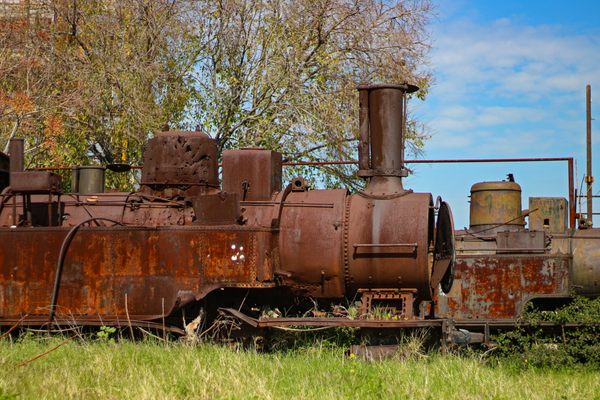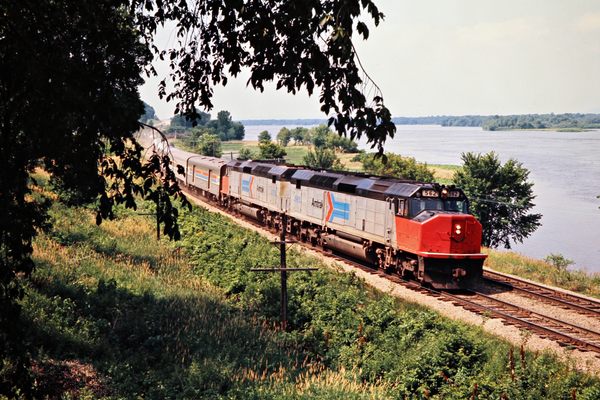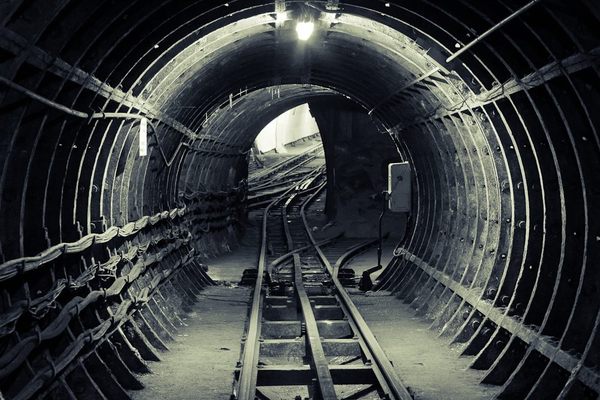No Trains Required to Ride the Rails
Jeep on the train tracks in France during WWII (via PhotosNormandie)
It’s a fact of life: not everyone can afford a private train. Even if we could, the diesel bills and traffic jams would be horrendous. But that doesn’t mean the world’s railroad tracks have to be reserved for dictators, millionaires, and “big train.”
From bamboo carts, to bicycles, to VW camper vans, almost every vehicle imaginable has been modified to ride the rails at some point.
A Gaz M13 — the top-of-the-line Soviet luxury car — modified for railway use (photo by János Tamás, via Wikimedia)
“Draisine” is used as a catch-all term to describe any small, non-train vehicle made to ride the rails. The name actually comes from the predecessor to the modern bicycle; it evolved into its current usage because many of the earliest draisines in Europe were pedal-powered.
A four-passenger pedal-powered draisine in Germany (photograph by Oktaeder, via Wikimedia)
Most draisines were designed to transport workers and materials for track maintenance. Americans, and silent-film buffs, are probably most familiar with what are called handcars or pump trolleys, but they’ve taken on all kinds of forms.
Handcar in use in Oklahoma, circa 1902 (via Wikimedia Commons)
One of the 30 modified VW camper vans ordered by the German National Railway in 1955 (photo by Spoorjan, via Wikimedia)
Until very recently, handmade draisines were an important part of Cambodia’s transportation infrastructure. The country’s rail network, constructed during French colonial days, was heavily damaged during the rise of the Khmer Rouge and subsequent civil war.
Left without a reliable and affordable means to transport people or move goods to market, some enterprising citizens in the cities of Battambang and Poipet built their own vehicles to take advantage of the existing tracks. Called “norry trains,” the first versions of these steel and bamboo carts were poled along the tracks like Venetian canal boats. Eventually builders added old motorcycle or tractor engines to power the carts — some could reach speeds of up to 30 mph.
Because the norries travel on single-track lines, there is no way for cars to pass each other. When two norries meet traveling in opposite directions, one is simply picked up and removed from the track while the second car passes. Fortunately Cambodia’s rail system is being modernized, and the norries are becoming more of a tourist attractions than a practical means of transportation. Similar craft are in use in rural parts of North Korea, but are rarely seen by foreigners.
Old tractor engine rigged to power a Norry train (photo by BluesyPete, via Wikimedia)
Tourists on a norry train in Battambang, Cambodia (photo by Henry Flower, via Wikimedia)
Nowadays, most track maintenance vehicles are ordinary trucks or SUV’s modified to be driven on the road or on railroad tracks. Outside of Cambodia and North Korea, these types improvised and human powered draisines are used mostly for recreational purposes. There are a number of events in the US and Australia where enthusiasts race for speed, as well as compete on creativity.
Entrants in the 2009 Santa Rosa Handcar Regatta (photo by David Berry/Flickr user)
Others focus on ”railriding” or “railbiking“ for exercise and sightseeing, which is especially popular in Europe.
A line of pedal-powered draisines for rent to tourists in Sweden (photo by Jan Krutisch/Flickr user)
As a conclusion, here’s a DIY postal car riding the rails in France:
Explore more of the world’s weirdest railroads on Atlas Obscura >









Follow us on Twitter to get the latest on the world's hidden wonders.
Like us on Facebook to get the latest on the world's hidden wonders.
Follow us on Twitter Like us on Facebook